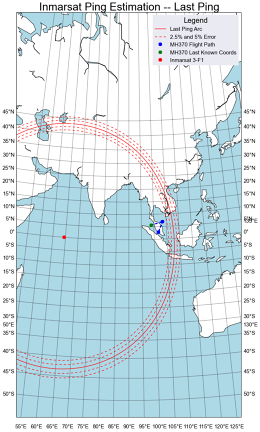Every company wants to be innovative. Unfortunately it's easy to underestimate what that requires, especially when it comes to organizing hackathons. But if you successfully pull one off, it can lead to connections and mindshare more valuable than any industry buzzword, according to Hacker League founder Mike Swift.
With more than 600 hackathon listings since its founding in 2011--and nearly 200 already listed for 2014--Hacker League and its founder have nailed down the fine-line formulas between hackathons that are badass and those that are just plain bad.
1) DON'T: Assume Hackathons Are For You
Wanting to be perceived as "innovative" is one of the most common reasons companies want to throw hackathons, according to Swift. But that's not a good enough reason, he says.
"A year ago I was fielding phone calls for hackathons on Hacker League and one woman said, 'Oh, we're going to run this hackathon, it's going to be great, and we're going to spark all this innovation around our industry.' So I asked, 'Well, why are you doing this hackathon?' She said, 'Well we just really want to spawn innovation and startups.'"
After explaining to the woman that there likely wouldn't be much in the way of innovation or new companies being launched, Swift offered alternate ideas. He suggested she offer a grant to startups that are already doing innovative things--which turned out to be a success.
"They just assumed a hackathon was the right answer, but they needed to think about the actual doable goals. You are not generating sustainable things that will take over the world or change the industry forever. Do things that you have a domain expertise on rather than just throwing it for the sake of throwing it."
There are plenty of good reasons to host a hackathon. Among them, Swift explains, are the ability to garner real-time product feedback and offer exclusive data for developers to use.
"Throw one [hackathon] if you have access to exclusive data--that no one else has--that would help developers somehow. Throw a hackathon if you're in a location that's not in San Francisco or New York that doesn't have hackathons every weekend--that way you can meet developers there."
Want to know more?New Hackathon Patterns That Don't Interrupt Your Entire Life.
2) DON'T: Prioritize Sponsors over Attendees
Swift says he often has to remind organizers that attendees are more important than sponsors.
"A lot of times, people will throw hackathons and the first ones they'll focus on are the sponsors because they helped put on the event or made it possible. But, really, if you focus on the attendees and optimize for them--everyone wins in the end," he says.
If the hackathon is a good one, sponsor praise will follow.
"If attendees think the event is great, they're going to think about all the sponsors who helped support it and they are going to want to come back and bring their friends. On the flip side, if you put on a bad event, they won't want to come back and they'll shame the companies that sponsored it," Swift says.
Swift says improving the physical environment and dietary options are simple ways to make attendees happy.
"Oftentimes, people will offer pizza and soda and that's the extent of the food but you should have some healthy options--fruits and vegetables and some granola bars. Take into account if people want to have places to sleep for a few hours. Often times, the expectation is attendees will want to be up all night but a lot of times, they'll want to take power naps or relax.
"Make sure the venue is clean. Have people there to pick up garbage throughout the night or weekend. Little things like that can go a long," he says.
Swift also recommends blogging about hacks after the hackathon has come and gone.
"Everybody loves when his or her products are written about. Blogging about some of your favorite hacks after an event can be a great way to highlight awesome developers and even make some networking connections."
3) DO: Have a One-Night Stand
More than 90% of hackathon projects don't go on to be anything after the event, according to Swift.
"I actually think that's a good thing," Swift says. "Hacks are art--it's a form of self-expression and the value is not building a product that lasts forever. It's more about building a product that demonstrates something cool."
A hackathon isn't the place for lofty goals or expectations.
"You have to approach it with the right goal. Some people will go into it saying, 'I want one of my hacks to be the next GroupMe,' which is unrealistic and probably most people don't want that."
Swift says hackers usually don't want to go into an accelerator afterwards.
"Some companies want to give hackers $24k in accelerator credits. And then guys are like, 'I don't really want to go to an accelerator, I kind of want to just be done with it.' Making sure your goals are aligned is really key--consider what your attendees want and optimize that," he says.
Garage48 cofounder Priit Salumaa says hackathons are like one-night stands.
"Weekend hackathons can be compared to building a business, like a one-night stand can be compared to a marriage. You can have sex with a stranger and leave the next morning, but building a family requires long-term commitment, trust, and friendship--a different kind of relationship," he says.
Sure, a one-night stand could lead to something bigger, but that's not the goal, says Salumma.
"A successful business after the hackathon is not our doing, but the effort of the individual teammates, people who decide to find the motivation to go on, and the ability to work together," he says.
4) DON'T: Offer Large Cash Prizes
"Prizes can make or break an event," Swift says. "I work on the largest hackathons in the world and I would never go over $1k."
"When you go above that price range it turns into a paycheck and suddenly the dynamic changes from 'I'm going to this event for fun' to 'I'm going for a payday.' I see some of the highest-quality events reduce the amount of prizes year after year," he says.
Swift did a survey from a few of hundred people where he found reasons for attending had nothing to do with the prize. "Eighty percent of them said the main reason they went to hackathons was to learn, while the other reasons included networking and fun," he says.
Instead of awarding big, cash prizes, companies should offer novelty prizes.
"At a Major League Hacking competition, the award was their [winning hacker's] name engraved on a trophy," Swift says. "There's no money, but they all wanted that trophy."
Nasdaq gave winning hacks and hackers screen time on the famous Nasdaq billboard in Times Square.
"I remember a Twilio hackathon where the winners got an action figure that looked exactly like them," Swift says. "Nobody would want that except you. Those kinds of prizes make for a better experience."
Twilio CEO Jeff Lawson bemoans large prizes in favor of novel ones like action figures, a personalized WWE-style belt, or a Kindle Fire with a monthly book credit.
"You see hackathons with very large prizes or big ad campaigns and I just don't think that's the right way to reach developers," Lawson says. "They have to be genuinely part of the communities they are servicing, and give them something of value--it's not about the money."
5) DO: Offer Product Roadmaps… And Follow Through
Since acquiring Hacker League in December, Mashery has begun bringing developers' perspectives to enterprises by encouraging them to have an open platform mindshare.
Mashery's head of developer platform, Delyn Simons, says enterprises are trending toward private hackathons where the successful ones are giving developers access to exclusive data, heads of engineering, and potential incubation.
"Companies can say, 'We can only fund four projects this year and the top two [hackathon] winners are going to move to the top of the list,'" Simons says.
She says giving marketing power to developers is invaluable. "With bigger companies, a lot of the engineers can't get their projects funded because they're in a different division."
But internal hackathons can fall victim to lip service too. "The No. 1 way to ensure hackathon failure is to not prioritizing developers' needs," she says. "Saying, 'Show me your innovative idea and we might think about it' then not following through is where most companies fail."
6) DO: Redefine The Model Each Time
Swift says finding new ways to innovate the hackathon model is going to be the key to both short- and long-term success of any given company. "Everybody can do the 24-hour hackathon format, so finding a way to make it different is going to be increasingly important."
He says the most interesting hackathons show their niche verticals.
"Hack'n Jill kept 50% men and 50% women at their event because they were working on keeping things diverse--a notorious problem in the tech industry," Swift says.
Another was a tournament-like event called Hacker Olympics. "It was almost like an anti-hackathon. The idea was a really short, really competition-driven event. It was like the inverse of what people normally do at hackathons," he says.
Some of Swift's favorite models include both niche and non-technical features.
"Comedy Hack Day was where developers partnered with comedians and hackers to make hilarious hacks. Comedians were the ones demoing the product, so it really turned into a comedy show."
Condé Nast ran one on Hacker League called Decoded Fashion Hackathon--another favorite of Swift's.
"Fashion experts talked about their problems within the industry, and immediately after the panel, hackers pitched them ideas for solutions then formed teams. Having relevant industry people can work really well," he says.
What was your most memorable hackathon experience? Tell us in the comment section below.



























